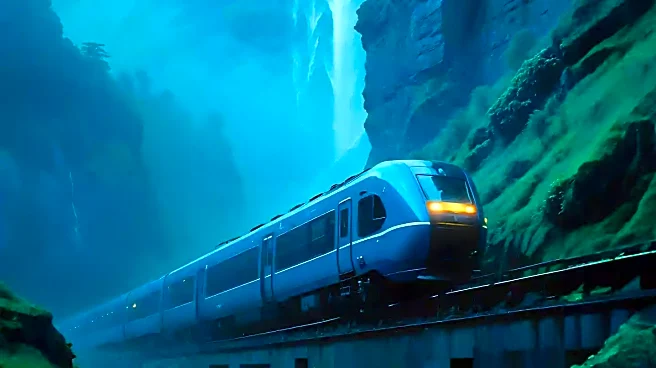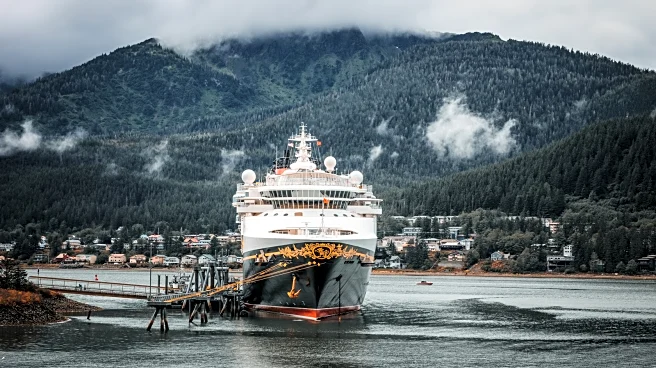What's Happening?
The world's longest train journey, spanning from Portugal to Singapore, presents a complex logistical challenge rather than a straightforward adventure. The trip begins in Lagos, Portugal, and involves multiple train changes, border crossings, and varying rail systems. Each segment of the journey requires separate ticket purchases, often through different websites, adding to the complexity. The route includes high-speed segments, such as the Madrid to Barcelona dash, and slower stretches, like the final Malaysian segment from Gemas to Johor Bahru. The journey showcases the transition from modern, electrified lines to older, diesel-powered trains, particularly in Malaysia. Despite the logistical hurdles, the trip offers unique opportunities to experience rural landscapes and diverse cultures that high-speed trains often bypass.
Why It's Important?
This train journey underscores the growing interest in slow travel, which emphasizes a more deliberate pace and deeper engagement with destinations. Slow travel advocates argue that this approach fosters richer, more meaningful experiences, promoting a simpler way of life. The journey highlights the challenges of maintaining long-distance rail continuity, especially in regions with closed borders and varying visa requirements. It also reflects broader trends in travel, where logistical obstacles can deter travelers from undertaking such extensive trips. However, for those who embrace slow travel, the journey offers a chance to appreciate the simple joys of daily rituals and mindful observation, contrasting with the efficiency-driven travel planning tools that prioritize speed over depth.
What's Next?
The future of such long-distance train journeys may depend on resolving logistical challenges, such as harmonizing ticketing systems and visa requirements across borders. As interest in slow travel grows, there may be increased demand for more seamless and integrated rail networks that facilitate these journeys. Additionally, political and economic factors, such as border policies and infrastructure investments, will play a crucial role in shaping the feasibility of such trips. Stakeholders, including governments and rail companies, may need to collaborate to enhance connectivity and improve the travel experience for those seeking slower, more immersive journeys.
Beyond the Headlines
The journey highlights ethical and cultural dimensions, such as the impact of travel on local communities and the environment. Slow travel encourages travelers to engage more deeply with the places they visit, potentially fostering greater cultural understanding and respect. It also raises questions about the sustainability of travel practices and the need to balance tourism with environmental conservation. As travelers seek more authentic experiences, there may be a shift towards supporting local economies and preserving cultural heritage, aligning with broader trends in responsible and sustainable tourism.














